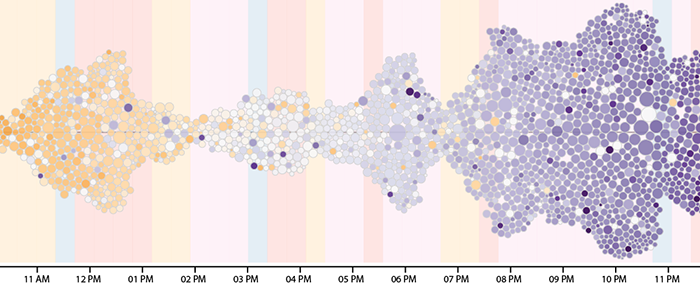
Contributors:
Jian Zhao, Nan Cao, Zhen Wen, Yale Song, Yu-Ru Lin, and Christopher Collins
We present FluxFlow, an interactive visual analysis system for revealing and analyzing anomalous information spreading in social media. Every day, millions of messages are created, commented on, and shared by people on social media websites, such as Twitter and Facebook. This provides valuable data for researchers and practitioners in many application domains, such as marketing, to inform decision-making. Distilling valuable social signals from the huge crowd’s messages, however, is challenging, due to the heterogeneous and dynamic crowd behaviours. The challenge is rooted in data analysts’ capability of discerning the anomalous information behaviours, such as the spreading of rumours or misinformation, from the rest that are more conventional patterns, such as popular topics and newsworthy events, in a timely fashion. FluxFlow incorporates advanced machine learning algorithms to detect anomalies and offers a set of novel visualization designs for presenting the detected threads for deeper analysis. We evaluated FluxFlow with real datasets containing the Twitter feeds captured during significant events such as Hurricane Sandy. Through quantitative measurements of the algorithmic performance and qualitative interviews with domain experts, the results show that the back-end anomaly detection model is effective in identifying anomalous retweeting threads, and its front-end interactive visualizations are intuitive and useful for analysts to discover insights in data and comprehend the underlying analytical model.
Publications
-
[pods name="publication" id="4359" template="Publication Template (list item)" shortcodes=1]
